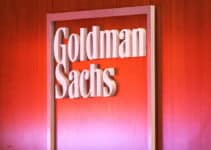And it is not just the big players. Technology platform and payday lender Nimble Australia went through a redundancy round in September, and Sydney-based payment provider Till axed about 120 staff this week.
But despite the wave of forced exits, there has rarely been a better time to find a new job, with Australia’s already tight labour market expected to keep demand for workers strong even as the economy slows.
Adelaide Timbrell, senior economist at ANZ, said although there would be changes to jobs markets, including recessions in some economies, employers across the country were still crying out for workers.
“There will be some job changes in the workforce based on local factors, and there will be recessions in major economies – though Australia will not be one of those most likely,” Ms Timbrell said.
“[Locally] there are still 444,000 vacant jobs across a really broad range of industries,” and recent job losses were unlikely to be substantial enough to hit the 48-year low 3.4 per cent unemployment rate, she added.
Despite a 5 per cent fall in job vacancies in November, private and public sector job availability is almost double pre-pandemic levels, according to Australian Bureau of Statistics data released this week.
About 28 per cent of firms reported at least one vacant position in the three months to November 2022, more than double February 2020.
High-frequency data from Seek out this week showed a seventh consecutive fall in December, with ads on the platform down 21 per cent from a May 2022 peak but still 34 per cent above pre-pandemic levels.
Similarly, the government’s preliminary internet vacancy index released on Friday showed a 0.3 per cent pullback in December, though it remains well elevated above the trend over the past decade.
“Despite the pullback in vacancies, the number of unemployed workers per vacancy remained at a record low of 1.1, consistent with ongoing tightness in the labour market,” said Goldman Sachs chief economist Andrew Boak.
“As a share of the labour force, vacancies eased [0.2 percentage points] to 3 per cent but remain near a record high.”
NAB economist Taylor Nugent said the ongoing decline in job advertising was consistent with some softening in the labour market, but the big four bank did not expect an imminent increase in the unemployment rate.
“Looking forward, as the pandemic-rebound slows and as activity cools more widely in response to the rapid tightening in rates, NAB forecasts the unemployment to move higher to 4 per cent by the end of 2023,” he said.


